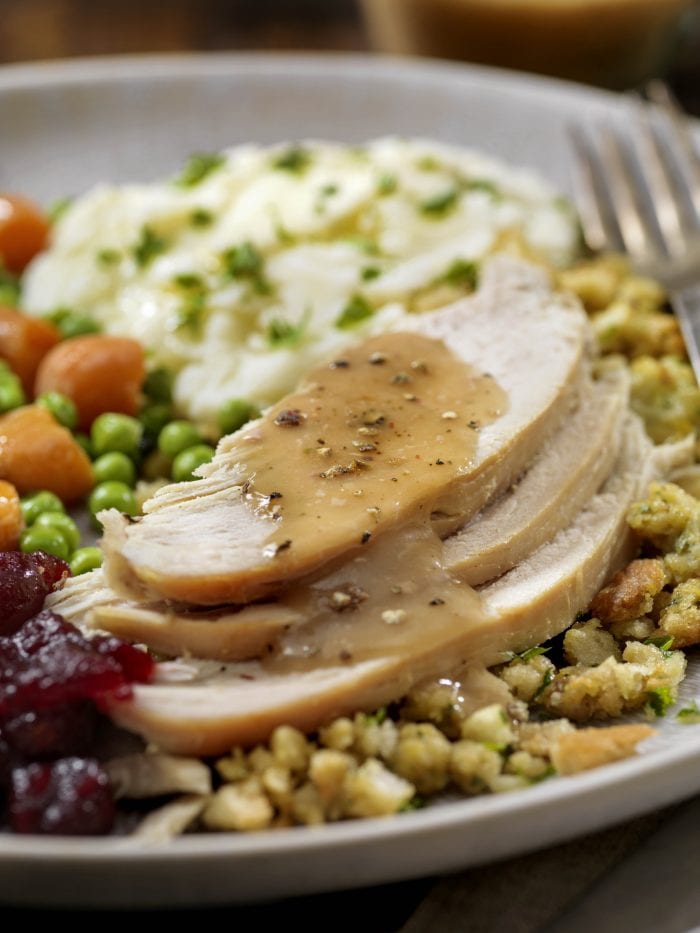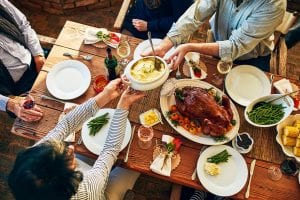By Leah S. Dunaief

Among the many preparations we made for our family Thanksgiving gathering this year, was carefully considering how to prevent any intrusion by COVID-19, a most unwelcome guest. The children and grandchildren were coming from six different states, so the potential exposure was widespread.
We agreed that everyone would have the appropriate vaccinations, two and a booster if possible. Each member also bought an Abbott BinaxNOW antigen self test result that they took before starting out on their trips. Everyone tested negative, so we were full steam ahead.
Thanksgiving Day was filled with hugs, laughter and love. We had not been all together in almost two years, and much conversation resulted, including how the youngest one had grown. After the traditional sumptuous dinner, we went around the table and spoke about what we were most grateful for in the past year. This is of special value to me, in addition to the lovely feelings of gratitude evoked, because it gives me a chance to catch up on their various activities.
The next day, Friday, we talked, walked, played games and ate some more. I almost didn’t register when one of my grandsons came to the dinner table a little late because he was feeling “achy.” But when he asked for an Advil the next morning, I got out the At-Home rapid test, and in 15 minutes we knew he was positive. Thinking it might be a false positive, we drove him to Stony Brook University Hospital, where he was given a PCR test, the gold standard, and in four hours we had the result.
Somehow, in spite of our careful efforts, the pathogen had found us. We then went to the next step and self-quarantined, but we are still trying to figure out where the hole in our defenses lies. As nearly as we can conclude, a negative test does not check for viruses in low numbers that are just beginning their infection in the nose, for example, and are still too few to register. With no symptoms, there is no way to detect their presence. It typically takes at least three days before the alarm goes off. So even weekly testing, which is so often done by institutions and employers, is not foolproof, especially if the patient is asymptomatic.
Fortunately, because my grandson was doubly vaccinated, the illness was of short duration, although he did lose his sense of taste and smell for a bit. The rest of the family members are fine. But what does that mean for all of us? The potential for infection is there, still with us despite how much we would like to leave it behind and despite all precautions. Gatherings of almost any size carry some risk, especially when we remove our masks to eat together, and we cannot be mindless of the threat.
There may be some good news, however. Omicron, the latest variant to be identified, seems to cause a milder version of the disease, at least so the early evidence indicates. And there are now two different pills that appear to hold back the most harmful effects of the virus if taken within five days of onset. One is from Merck and Ridgeback Biotherapeutics, called molnupiravir, that reduces the risk of hospitalization and death by 30%. It should be receiving FDA approval soon, even though it can cause serious side effects. The other is Paxlovid from Pfizer and so far appears to be 85% effective, perhaps to be authorized by year’s end. Made of a different formulation, it probably would not cause the same side effects as Merck’s but could cause others. Both pills could turn out to be a stop gap if the vaccines prove ineffective against new variants. And both may be more powerful if given together, as research against the virus that caused AIDS proved at that time. According to Dr. Fauci, the government’s top infectious disease expert, who oversaw combination therapy for HIV years ago, such a clinical trial could be quickly done.











